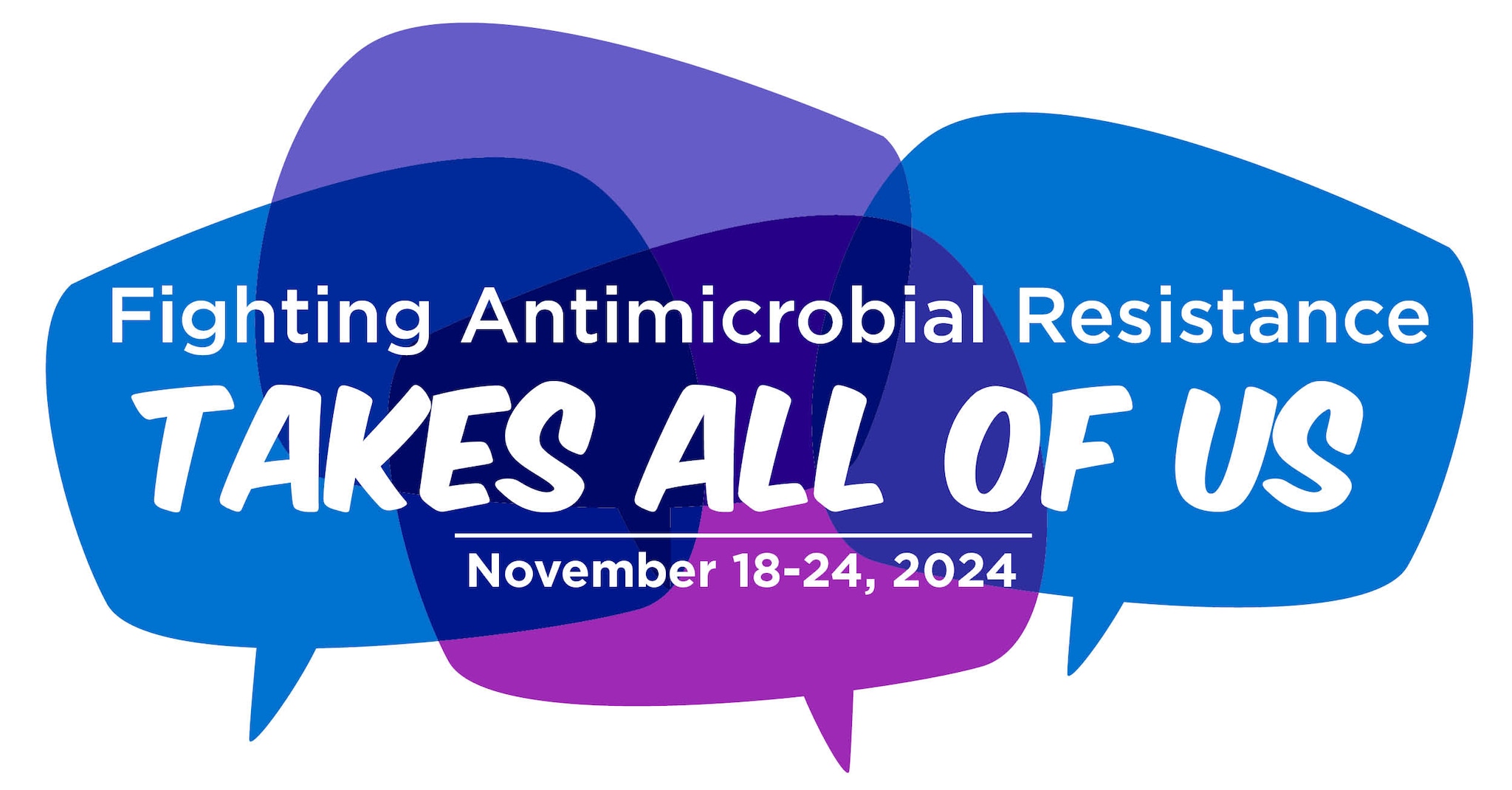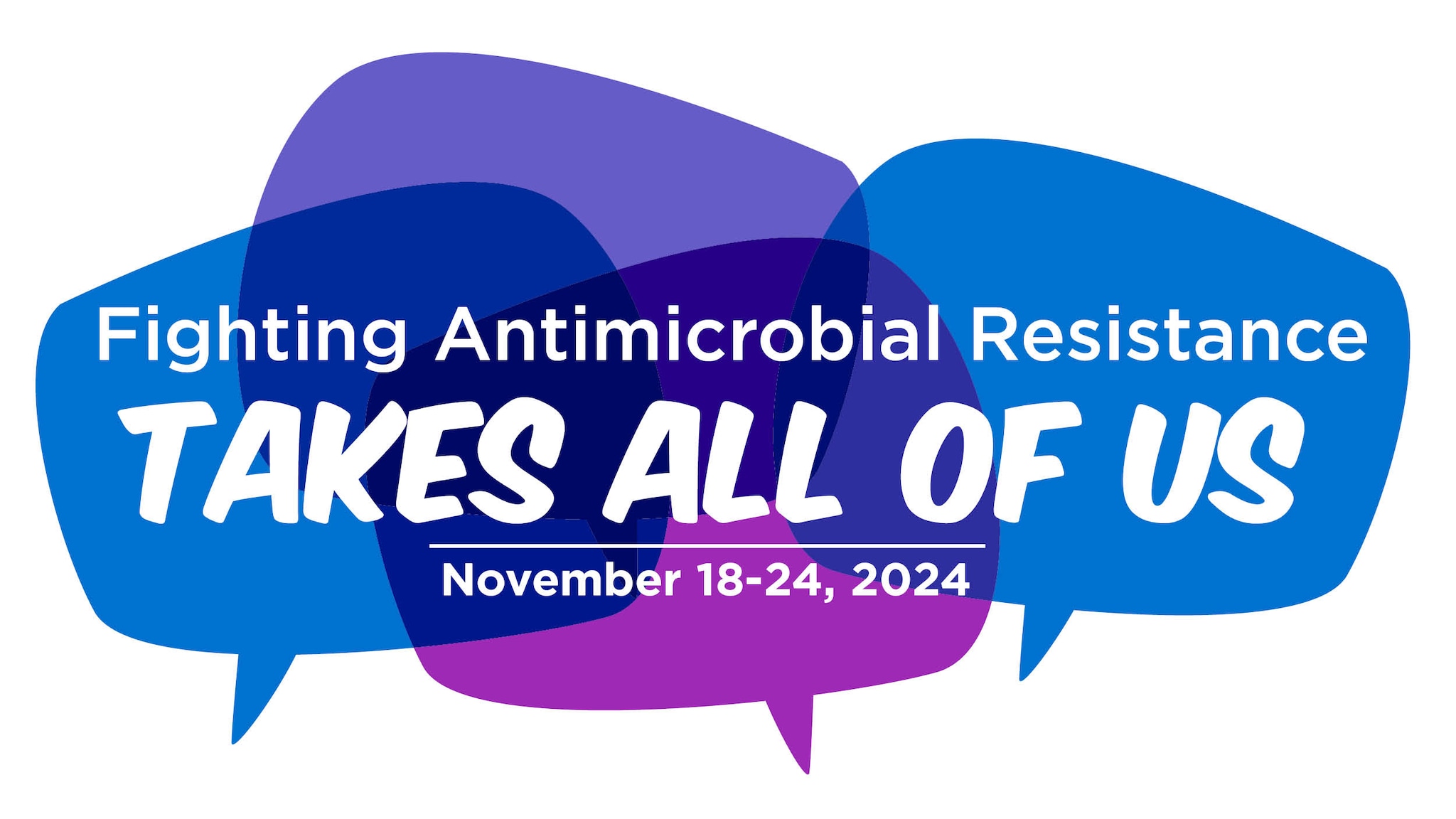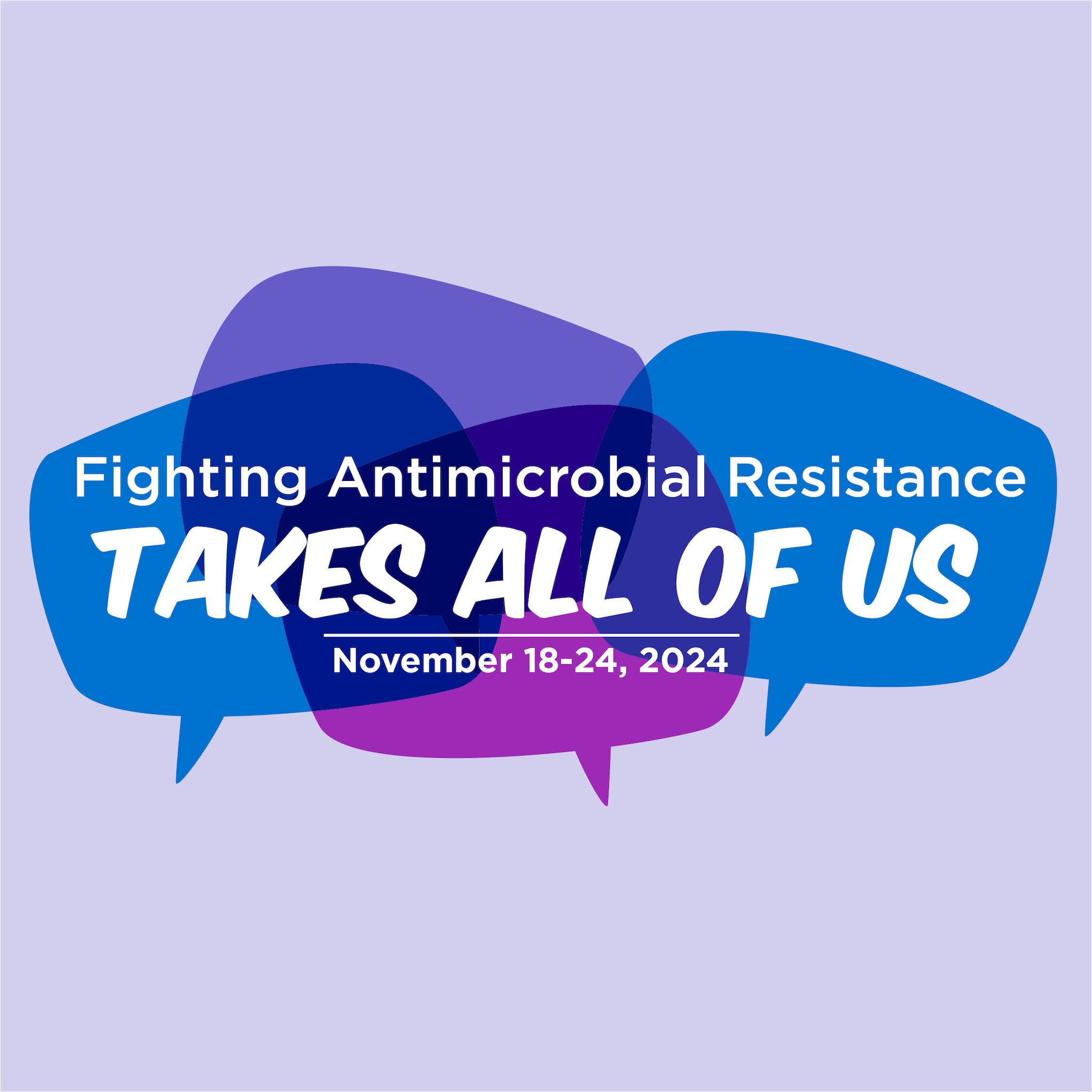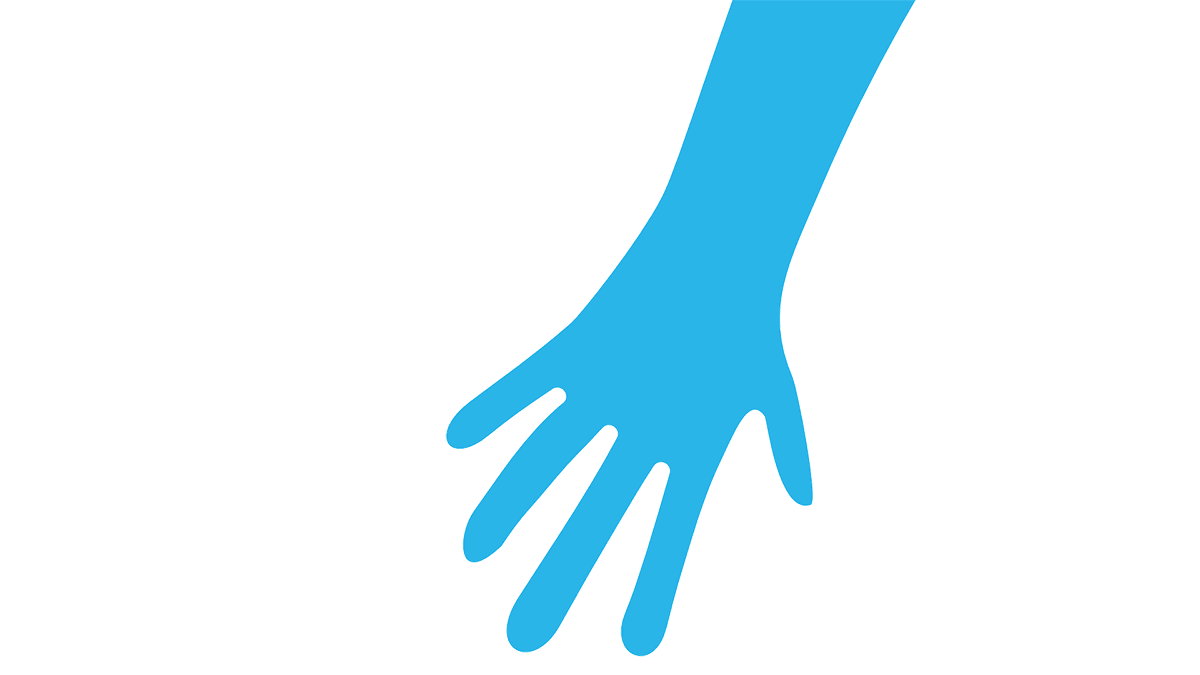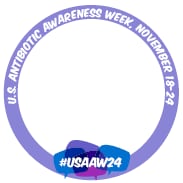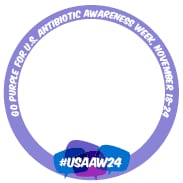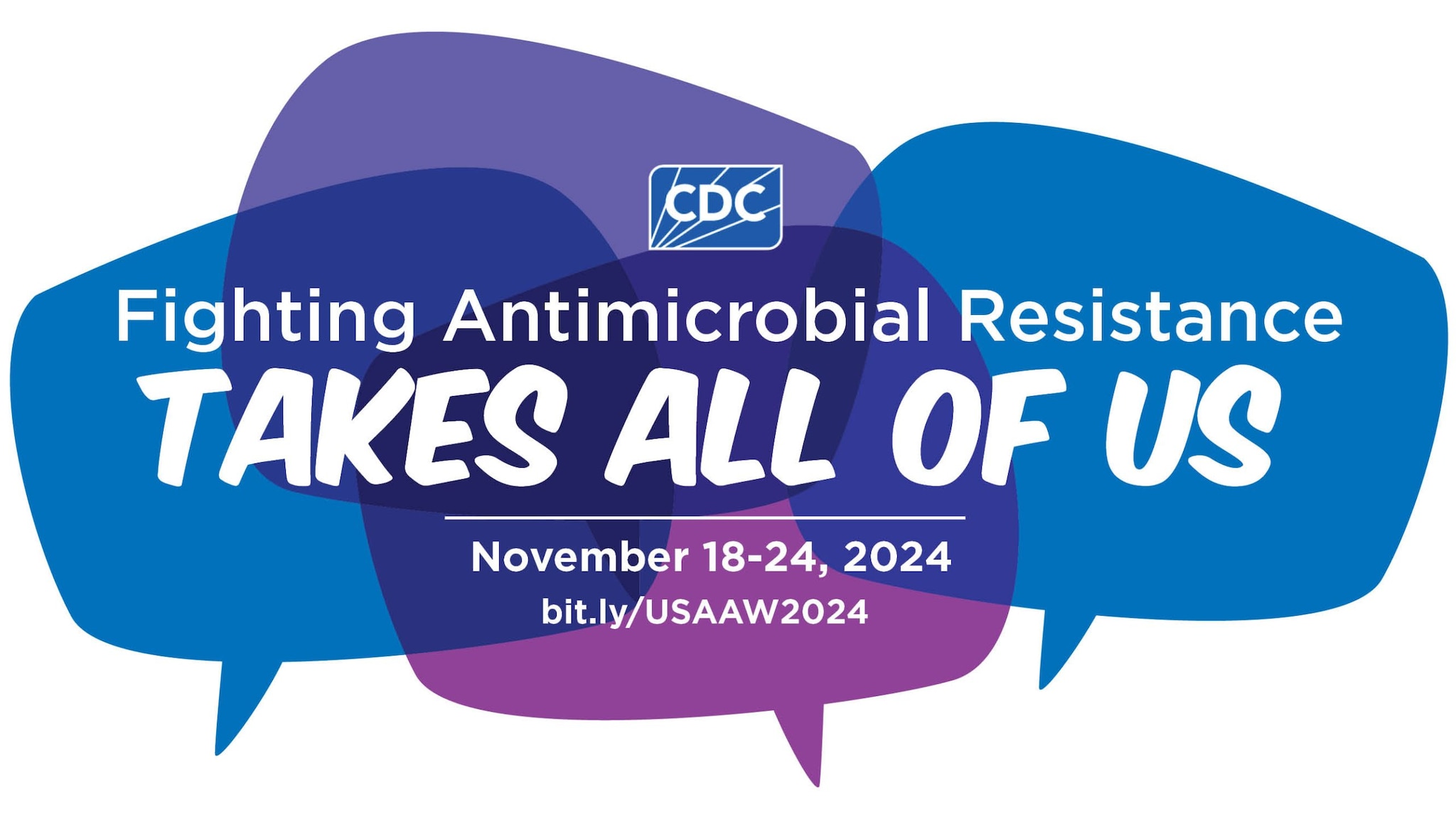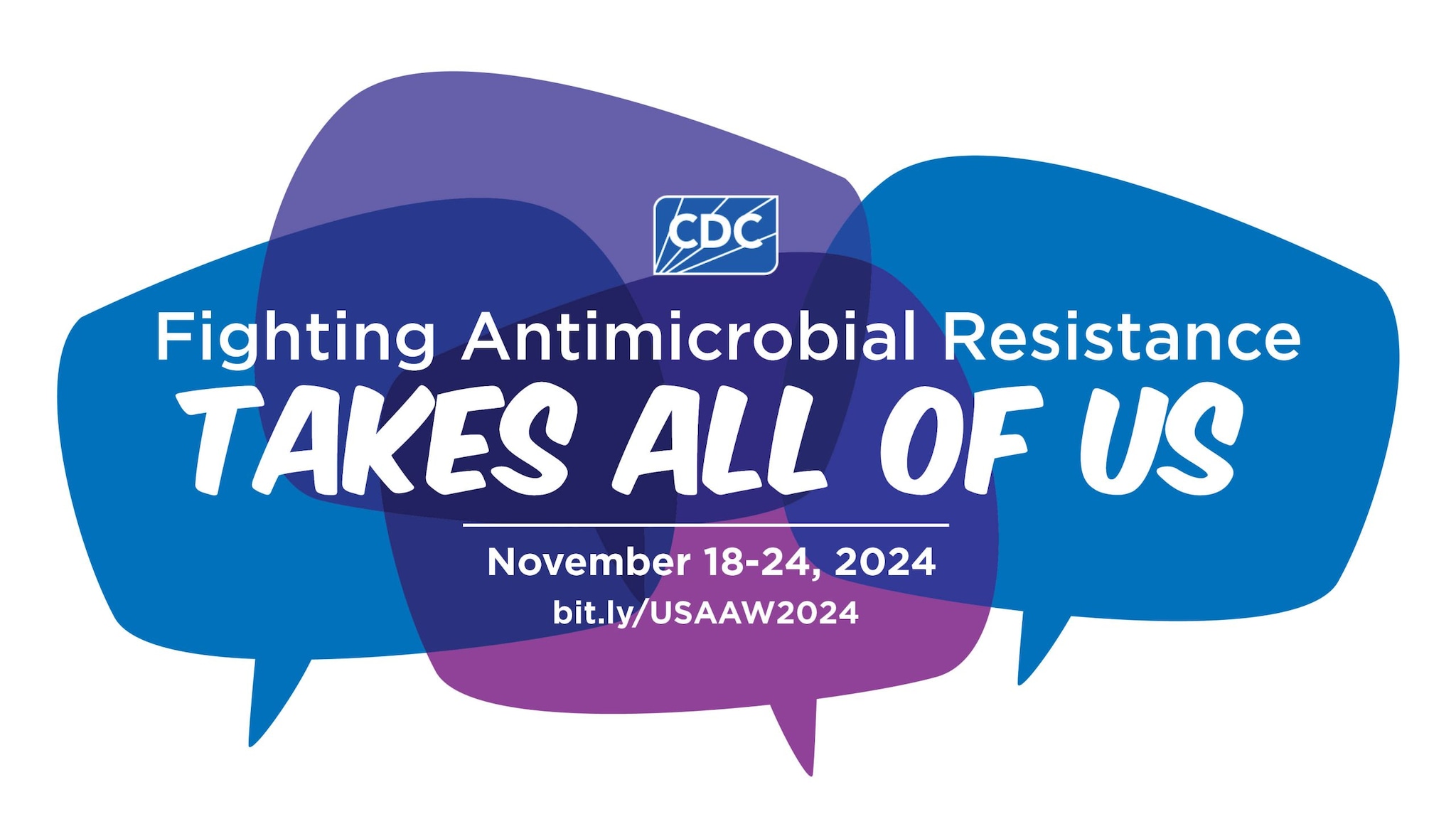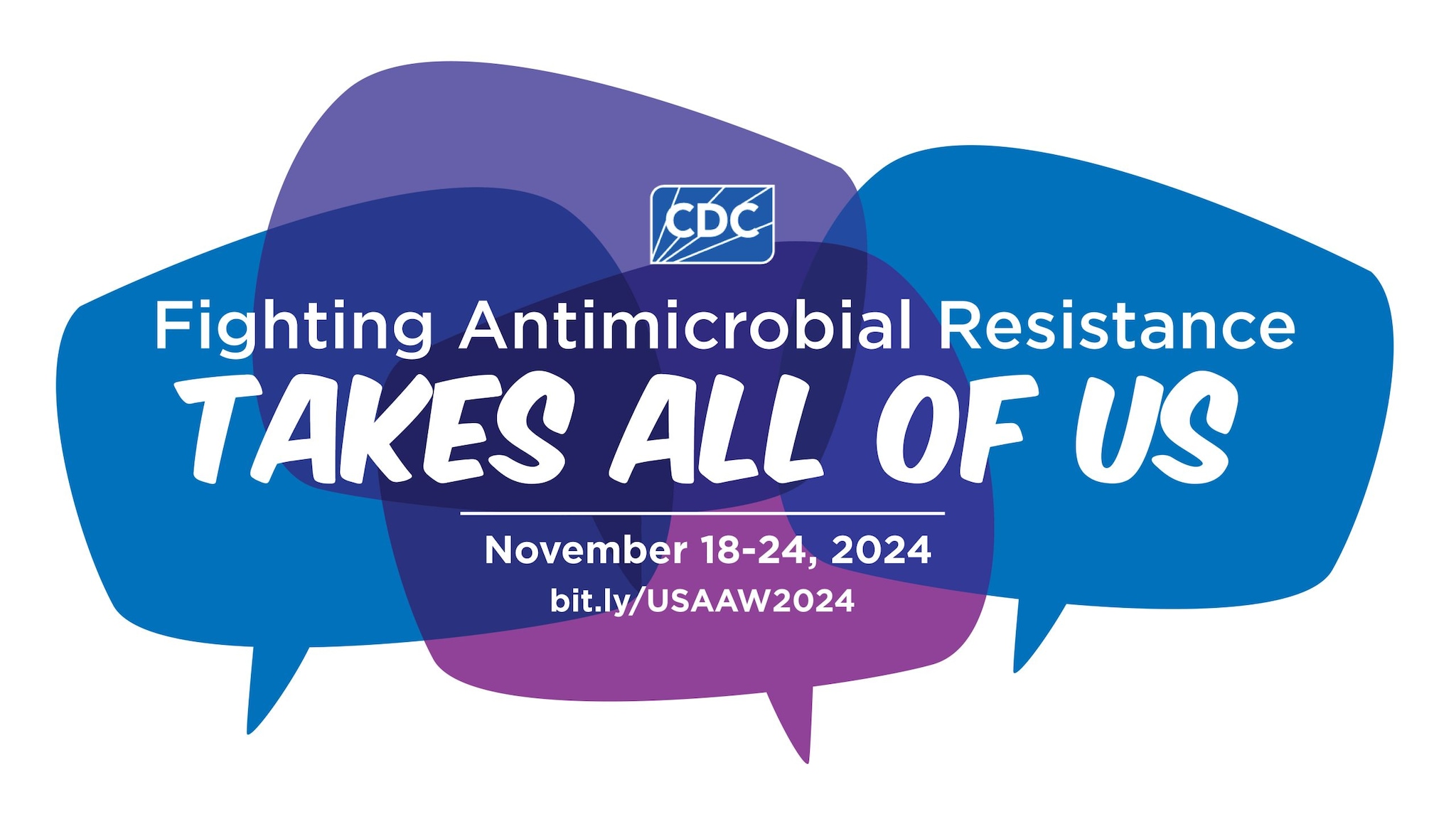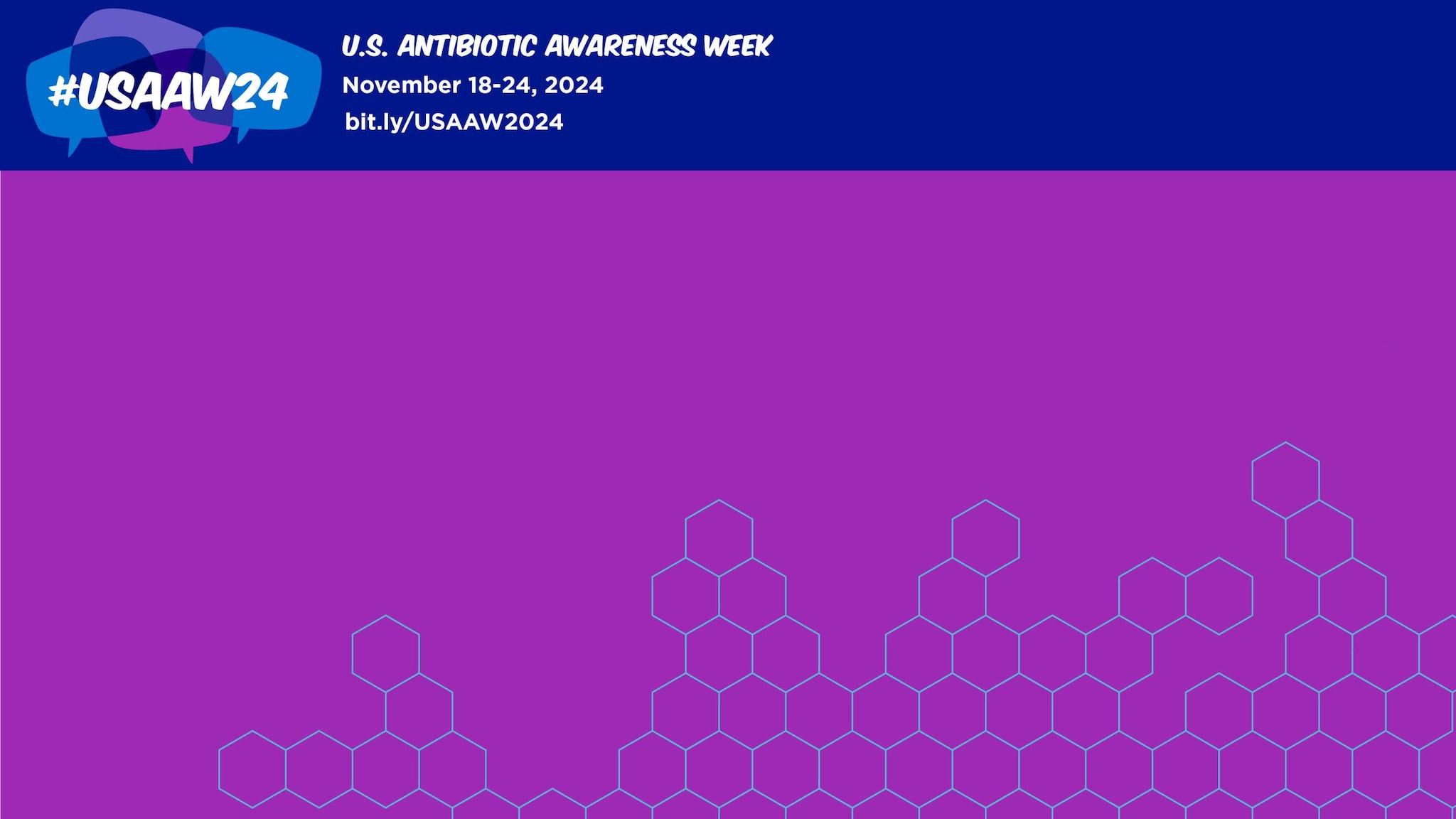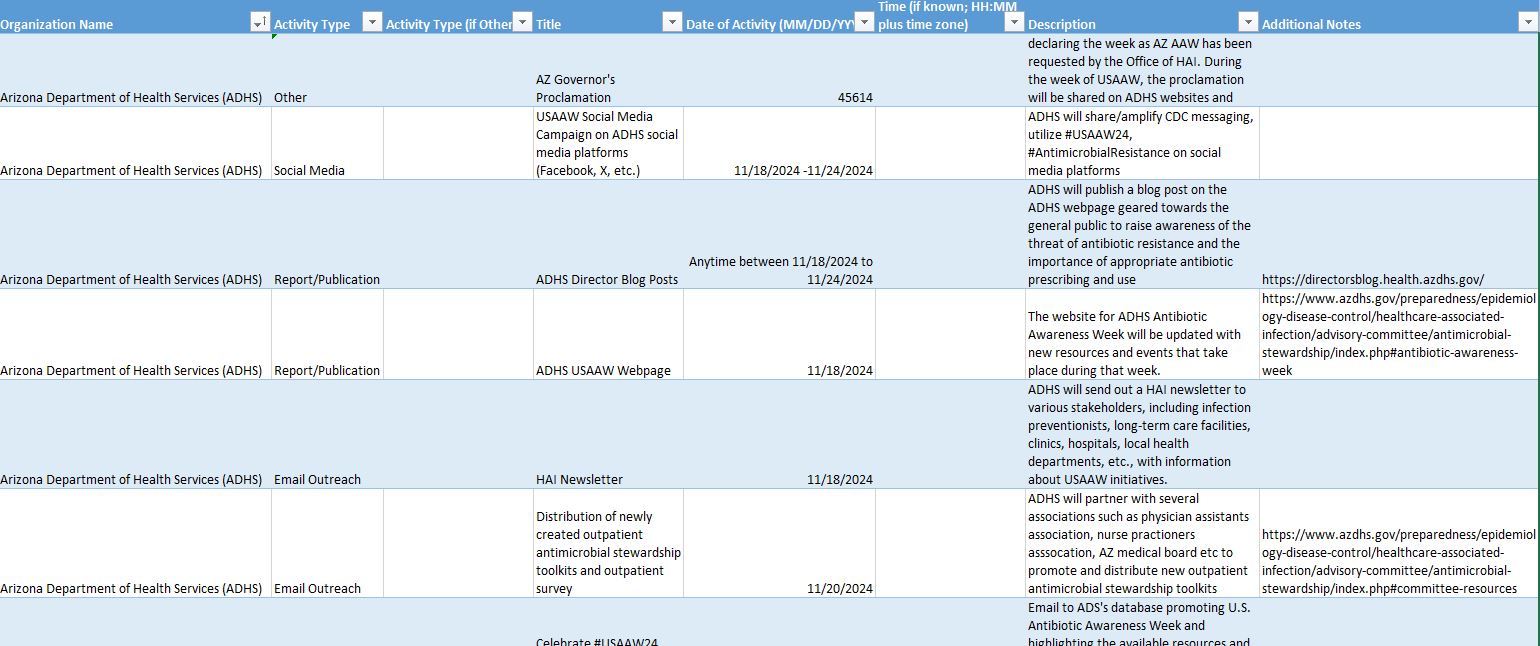Purpose
U.S. Antibiotic Awareness Week (USAAW) is observed each year from November 18-24. The purpose of the observance is to raise awareness of the importance of appropriate antibiotic and antifungal use and the threat antimicrobial resistance poses to people, animals, plants and their shared environment.
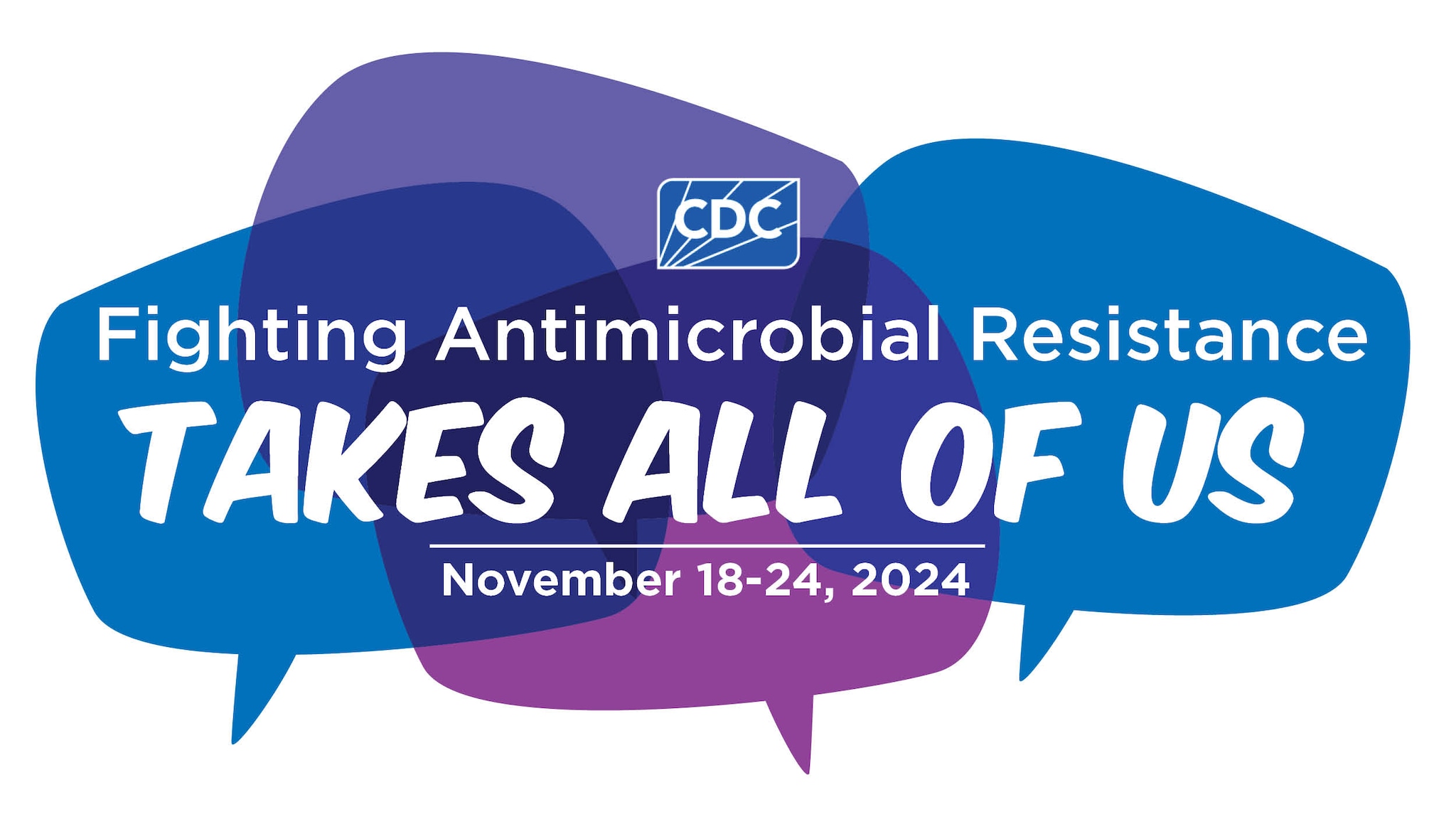
USAAW 2024
CDC's theme for USAAW 2024 is "Fighting Antimicrobial Resistance Takes All of Us." CDC champions using a One Health approach to fight antimicrobial resistance, which recognizes the health of people is closely connected to the health of animals, plants, and their shared environment. Working together, we must improve the global prescribing and use of antibiotic and antifungal drugs and invest in global infection prevention actions across the health of humans, animals, plants, and the environment (for example soil and water). Each day during USAAW, CDC will focus on a different theme. A variety of resources are available in the USAAW Toolkit below to help you participate.
About antimicrobial resistance
Antimicrobial resistance happens when germs, like bacteria and fungi, develop the ability to defeat the drugs designed to kill them. That means the germs are not killed and continue to grow. Antimicrobial resistance is an urgent global public health threat that is estimated to cause more than 1.27 million deaths around the world and nearly 35,000 deaths in the United States each year. When Clostridioides difficile (C. diff) is added to the annual U.S. death toll for all antimicrobial resistance threats, the number jumps to 48,000 deaths. Antimicrobial resistance can affect anyone, anywhere, and at any stage of life. Antimicrobial-resistant germs can spread rapidly across the globe in and between healthcare facilities, as well as in the community, environment, and our food supply.
Preventing infections in the first place is our first line of defense against antimicrobial resistance. Access to clean water and adequate sanitation, vaccination coverage, and access to quality health care can prevent infections and the spread of antimicrobial resistance worldwide. Improving appropriate antibiotic and antifungal use is also critical. Appropriate use of antibiotic and antifungal drugs helps improve patient outcomes by optimizing the treatment of infections, avoiding drug-related side effects, and slowing the development of antimicrobial resistance.
Who participates in USAAW
Partner organizations—including U.S. federal agencies, health departments, professional societies, corporations, and patient and family representatives—are critical to the success of USAAW and to raising awareness about the importance of appropriate antibiotic and antifungal use and the threat of antimicrobial resistance during the observance and throughout the year. Each year more than 300 organizations participate in USAAW in a variety of ways—from participating in activities and events to distributing CDC materials, graphics, and messaging.
Global observances
The dates of the USAAW observance are aligned with the World Health Organization (WHO) observance World Antimicrobial Resistance Awareness Week (WAAW).
Other international observances coinciding with USAAW include:
How to use the USAAW toolkit
The USAAW toolkit was created to help you easily share messages and materials with your community, partners, or key audiences.
- Use the daily themes and key messages to guide your activities during the week.
- Copy and share our sample social media messages and graphics.
- Learn more about Go Purple for USAAW and how you can participate.
- Use the hashtag #USAAW24 when sharing any USAAW related content.
- See how you can participate in CDC and other organization's activities.
- Promote our resources to share important information about appropriate antibiotic and antifungal use, antibiotic stewardship, and antimicrobial resistance.
Daily themes and key messages
- November 18: Fighting antimicrobial resistance takes all us
- Everyone has a role in fighting antimicrobial resistance. Working together, through a One Health approach, we must improve the global prescribing and use of antibiotic and antifungal drugs and invest in global infection prevention actions across human health, animal health, plant health and the environment (for example soil and water). Learn about actions you can take to fight antimicrobial resistance.
- Everyone has a role in fighting antimicrobial resistance. Working together, through a One Health approach, we must improve the global prescribing and use of antibiotic and antifungal drugs and invest in global infection prevention actions across human health, animal health, plant health and the environment (for example soil and water). Learn about actions you can take to fight antimicrobial resistance.
- November 19: The global threat of antimicrobial resistance
- Antimicrobial resistance is a global challenge that has been identified in all regions of the world and can spread rapidly from one part of the world to another. The amount of resistance, number of infections, capacity and resources for infection prevention and control, and healthcare quality vary worldwide. Access to clean water and sanitation and vaccinations also differ around the world. Read how CDC is helping countries around the world improve their abilities to detect and combat antimicrobial resistant in healthcare settings.
- Antimicrobial resistance is a global challenge that has been identified in all regions of the world and can spread rapidly from one part of the world to another. The amount of resistance, number of infections, capacity and resources for infection prevention and control, and healthcare quality vary worldwide. Access to clean water and sanitation and vaccinations also differ around the world. Read how CDC is helping countries around the world improve their abilities to detect and combat antimicrobial resistant in healthcare settings.
- November 20: Human health & antimicrobial resistance
- Antibiotic and antifungal drugs are valuable tools for treating infections, but their use—for people, animals, or plants—can contribute to antimicrobial resistance.
- Any time antibiotics or antifungals are used, they can cause side effects and contribute to the development of antimicrobial resistance, one of the most urgent threats to the public's health. Many medical advances are dependent on the ability to fight infections using antibiotics, including joint replacements, organ transplants, cancer therapy and the treatment of chronic diseases like diabetes, asthma, and rheumatoid arthritis. If antibiotics or antifungals lose their effectiveness, then we lose the ability to treat infections and control these public health threats.
- Individuals, parents, and caregivers, learn more about antibiotic do's and don'ts.
- Healthcare providers, find resources for patient education on antibiotic use.
- Antibiotic and antifungal drugs are valuable tools for treating infections, but their use—for people, animals, or plants—can contribute to antimicrobial resistance.
- November 21: Animal health & antimicrobial resistance
- Pet owners, practice healthy habits when caring for your animals like washing your hands after touching or feeding your pet. Try to keep your animals and pets healthy by keeping up with your pet’s vaccines, deworming, and flea and tick control. When your pet is sick, be sure to talk to your veterinarian about antimicrobial resistance and using antibiotics and antifungals only when needed to prevent risk to your pets.
- Veterinarians can work with animal owners and producers to slow the spread of antimicrobial resistance by ensuring appropriate prescribing and use of antibiotics and antifungals and implementing infection prevention and control strategies while providing high-quality medical care for animal patients.
- Animals carry germs in their gut, including antimicrobial-resistant germs. These germs can spread between animals and in their environments - farms, in animal markets, during transport and processing – and then to people. It's important to protect the health of animals and the people who work with them, the community, and our food supply. Learn more about the specific infection prevention actions livestock and poultry producers can take to fight antimicrobial resistance.
- Pet owners, practice healthy habits when caring for your animals like washing your hands after touching or feeding your pet. Try to keep your animals and pets healthy by keeping up with your pet’s vaccines, deworming, and flea and tick control. When your pet is sick, be sure to talk to your veterinarian about antimicrobial resistance and using antibiotics and antifungals only when needed to prevent risk to your pets.
- November 22: Antimicrobial resistance in agriculture and the environment
- Human activity can contaminate the environment (for example water and soil) with antibiotics and antifungals, which can speed up the development and spread of antimicrobial resistance.
- Antibiotics and antifungals are sometimes applied as pesticides to manage plant and crop diseases. However, using antibiotics and fungicides in agriculture can contribute to the development and spread of antimicrobial resistance in the environment, in humans, and in animals.
- Learn how antimicrobial resistance can spread through the environment and in agriculture.
- Human activity can contaminate the environment (for example water and soil) with antibiotics and antifungals, which can speed up the development and spread of antimicrobial resistance.
- November 23: One Health approach to antimicrobial resistance
- Antimicrobial resistance is a One Health problem that can affect the health of people, animals, and the environment. One Health is an approach that recognizes the health of people is closely connected to the health of animals and our shared environment.
- If we all work to improve antibiotic and antifungal prescribing and use and take preventive actions to stop infections from happening in the first place, our collective actions can reduce the spread of antimicrobial resistance globally.
- Antimicrobial resistance is a One Health problem that can affect the health of people, animals, and the environment. One Health is an approach that recognizes the health of people is closely connected to the health of animals and our shared environment.
- November 24: Continuing the fight against antimicrobial resistance
- CDC is a leader in the fight against antimicrobial resistance and invests in national and global infrastructure to detect, respond, contain, and prevent antimicrobial-resistant infections across healthcare settings, communities, the food supply, and the environment to protect people and save lives. Learn more about CDC's investments in fighting antimicrobial resistance.
- Fighting antimicrobial resistance takes all of us and everyone can play a role. Find out what actions you can take to fight antimicrobial resistance.
- CDC is a leader in the fight against antimicrobial resistance and invests in national and global infrastructure to detect, respond, contain, and prevent antimicrobial-resistant infections across healthcare settings, communities, the food supply, and the environment to protect people and save lives. Learn more about CDC's investments in fighting antimicrobial resistance.
Go Purple for USAAW
CDC is inviting families, friends, organizations, and communities to shine a spotlight on antimicrobial resistance by participating in Go Purple for USAAW. This nationwide effort encourages individuals to wear purple and bring purple to their social media and invites organizations, healthcare facilities, and municipalities to light up buildings and landmarks purple to bring awareness to the role everyone has in combating antimicrobial resistance.
How can you participate?
- Light up buildings or landmarks in purple during November 18-24.
- If your organization needs a specific color of purple to use, you can use either of these two purples: Pantone 2735 C or Pantone 2725.
- If your organization needs a specific color of purple to use, you can use either of these two purples: Pantone 2735 C or Pantone 2725.
- Dress in purple and bring purple to your social media accounts during USAAW.
- Share the USAAW support letter with your employer or community leaders to encourage them to Go Purple for USAAW.
- Engage with @CDC_AR and others on social media to share USAAW messages. Use our sample social media messages and graphics and be sure to use #USAAW24.
If you are interested in participating in Go Purple for USAAW, let us know by registering! On the registration form you can share you plans to Go Purple and recognize USAAW.
Social media messages
Social media graphics
USAAW 2024 promo graphics
USAAW 2024 Promo GIFs
Go Purple GIFs
Social media stickers
Press graphics
USAAW 2024 promo graphic
Go Purple GIFs
1280 x 720
1920 x 1080
3840 x 2160
Other graphics
Webinar background
Activities during USAAW/WAAW
CDC activities
Social media
Follow and interact with CDC on social media.
- X (formerly Twitter): @CDC_AR, @CDCgov, @CDC_NCEZID.
- Facebook: CDC.
- Instagram: CDCgov.
- LinkedIn: Centers for Disease Control and Prevention.
Use #USAAW24 and #AntimicrobialResistance to join the conversation.
- Monday, November 18, 10-11 a.m. EST
- Global X Storm hosted by @CDC_AR
- Join the conversation using #AntimicrobialResistance and #WAAW
- Global X Storm hosted by @CDC_AR
- Thursday, November 21, 2-3 p.m. EST
- Live X Chat co-hosted by CDC, Society of Infectious Diseases Pharmacists, The Society for Healthcare Epidemiology of America, and American College of Clinical Pharmacy Infectious Disease Practice and Research Networks
- Topic: Fighting Antimicrobial Resistance Takes All of Us
- Follow @SIDPharm for more details, use #FightAR to join the conversation
- Live X Chat co-hosted by CDC, Society of Infectious Diseases Pharmacists, The Society for Healthcare Epidemiology of America, and American College of Clinical Pharmacy Infectious Disease Practice and Research Networks
Webinars/Podcasts
- Tuesday, November 19, 7:30-9 a.m. EST
- Topic: The Race Against Antimicrobial Resistance in Neonates: Insights on Data, Infection Prevention and Stewardship
- Presenters: Amelia Keaton, Fahmida Chowdhury, Fabio Motta
- Registration: https://cdc.zoomgov.com/webinar/register/WN_tdLh5JEETtas6eSUWuyD_Q
- Topic: The Race Against Antimicrobial Resistance in Neonates: Insights on Data, Infection Prevention and Stewardship
- Tuesday, November 19, 1-2 p.m. EST
- Topic: Penicillin Allergy De-labeling as a Tool for Inpatient Antimicrobial Stewardship: A Real-World Experience
- Presenters: Melinda Neuhauser, Cosby Stone, Jr., Joanna L. Stollings
- Registration: https://attendee.gotowebinar.com/register/5214080293817514326
- Topic: Penicillin Allergy De-labeling as a Tool for Inpatient Antimicrobial Stewardship: A Real-World Experience
- Wednesday, November 20, 3-4 p.m. EST
- Topic: Implementation of Priority Core Elements in Critical Access Hospitals
- Speakers: Melinda Neuhauser, Anthony Rodewald, Trevor Van Schooneveld, Amy Web
- Registration: https://cdc.zoomgov.com/webinar/register/WN_gN14frcnQm27s1MkKmAZwQ
- Topic: Implementation of Priority Core Elements in Critical Access Hospitals
- Thursday, November 21
- Topic: Be Antibiotics Aware: Management of Community-aquired Pneumonia in Hospitalized Adults
- Speakers: Jerod Nagel, Michael Pulia, Arjun Srinivasan
- Free to listen: Clinical Conversations - ASHP
- Topic: Be Antibiotics Aware: Management of Community-aquired Pneumonia in Hospitalized Adults
Partner activities
Click on the link to find a list of USAAW/WAAW activities from some of our partners.
Resources
Toolkits and other resources
- Be Antibiotics Aware Partner Toolkit
- Antibiotic use patient education resources
- Antibiotic use educational materials for healthcare providers
- Antibiotic stewardship resource bundles
Recent publication
Antimicrobial Resistance Threats in the United States, 2021-2022
CDC web pages
- Antibiotic prescribing and use
- Antimicrobial resistance
- Antimicrobial resistance, food and food animal
- Core elements of antibiotic stewardship
- International infection control
- Sepsis
- One heath
To stay up to date on USAAW activities or any antibiotic stewardship or antimicrobial resistance news, sign up for email updates.
Go Purple for USAAW registration form
U.S. Antibiotic Awareness Week (USAAW) is held annually, November 18-14. This year, CDC is inviting communities to help recognize USAAW by getting people to wear purple, bring purple to their social media accounts, or light up significant or important buildings or monuments in their community during the week. If you would like to Go Purple for USAAW with CDC and others, please use this form to tell us a little more about yourself, your community, or organization so our media specialist can share more information with you.

